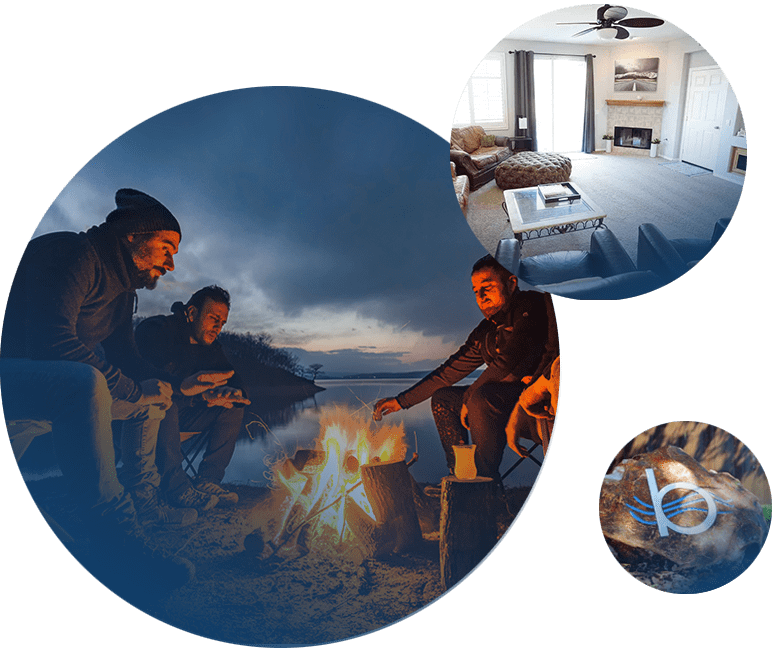


Living with chronic pain in recovery can feel like a minefield, especially if the pain is relatively new and you've experienced it while sober. While many people become addicted to drugs after being exposed medically, others may need pain relief while sober. Taking opioids for more than a day or two is not safe for people in recovery. Yet longer-term pain may remain; it's not something that improves as you stay sober longer. People with chronic illnesses need solutions that help them stay sober and improve their quality of life.
Chronic pain typically can come from various conditions, from nerve damage from long-term drug use to pain from injuries, accidents, and illnesses that didn't heal. Many people in recovery live with chronic diseases. Sometimes that means they live with chronic pain, too.
When left untreated, chronic illness can significantly impact the quality of life of an individual. In the past, opioids, such as morphine and oxycodone, were considered the go-to treatment for severe pain. Today, many doctors are better educated and choose a multi-pronged approach to minimize harm.
Here are some potential options:
Buprenorphine, while also used in Medication-Assisted Treatment, is a medication that can help with pain management in a few different ways. First, it is a partial opioid agonist, meaning it can produce some pain-relieving effects as other opioids but with a lower risk of addiction and fewer side effects.
Buprenorphine also has a ceiling effect, meaning it cannot produce any additional pain relief after a specific dose, making it safer to use than other opioids. Buprenorphine works as an antagonist at receptor sites in the brain, which means it can block other opioids from binding and therefore reduce the risk of overdose.
Buprenorphine has been shown to positively affect mood, making it helpful to people who live with chronic pain and struggle with depression. A qualified healthcare provider should only prescribe buprenorphine, and patients should follow their provider's treatment plan carefully. Not every health plan will offer it, and you may not qualify for it. Speak with your healthcare providers to learn more.
In pain management, low-dose naltrexone (LDN) has been studied as a potential therapy for conditions such as fibromyalgia, neuropathic pain, and chronic fatigue syndrome. It is thought to work by modulating the immune system and reducing inflammation, which may contribute to chronic pain.
Naltrexone is no longer considered experimental. However, not all health insurance companies will cover it, and not all treatment centers offer it. Naltrexone used for chronic pain rather than opioid use disorder is considered off-label and may not covered by health insurance.
In addition to medication-based treatment, integrative approaches like physical therapy, cognitive-behavioral therapy, and mindfulness-based interventions can help reduce chronic pain without relying on opioids.
People with chronic pain or no pain can become addicted to opioids. If you live with opioid use disorder, and need treatment for chronic pain, work closely with your doctor to try non-addictive treatment options.
On Jan. 30, 2023, the Biden Administration announced it would end the COVID public health emergency, which could mean new issues regarding telehealth and Medication-Assisted Treatment when the order ends in May this year. MAT, especially buprenorphine, was expanded to online access for most people with opioid use disorder, giving greater access to desperately needed treatment for people in rural areas. Now, it appears that access to buprenorphine may be trickier than it seemed before.
The expansion has saved lives, and there have been repeated assurances by HHS, DEA, SAMHSA, and even the Biden Administration that telehealth buprenorphine patients won’t lose access to treatment. The truth, however, is murkier than it seems. It appears the DEA wants to put much stronger limits to telehealth treatment in place, which could cause unsurmountable access barriers for people who can’t go in person to get their meds prescribed.
The new proposed rules, treatment advocates say, could cause more harm than good. While they say they’re not stripping access to treatment, the rules would make treatment much more difficult for vulnerable demographics. Patients will be required to have in-person exams and will not be able to continue to a fully virtual telemedicine care regimen. Patients already taking MAT will not be exempted; if their care began at a virtual clinic, they now would need to meet a treatment provider in-person to continue their care.
There seems to be little scientific reasoning behind this; unlike other treatment drugs, buprenorphine is a partial opioid agonist. It is less likely to be abused compared to other opioids due to its unique pharmacological properties and the way it is prescribed. Buprenorphine has a "ceiling effect," which means that after a specific dose, taking more medication does not produce any additional effects, making it less likely to be abused.
Many medical and professional societies have advocated for increased access to MAT, including buprenorphine. The American Society of Addiction Medicine (ASAM), a professional society representing physicians, clinicians, and other healthcare professionals specializing in addiction medicine, has long argued for increased access to MAT to improve treatment for opioid addiction. The American Medical Association (AMA), the largest professional association of physicians in the United States, has supported efforts to expand access to buprenorphine as part of a comprehensive approach to addressing the opioid epidemic.
Other doctor organizations have recognized the importance of increasing access to buprenorphine to help combat the opioid epidemic and improve the treatment of opioid addiction. The American Academy of Family Physicians, American College of Physicians, and American Osteopathic Association have written letters or papers supporting increasing access to buprenorphine.
Hundreds of organizations signed a paper asking the Biden Administration to make the emergency act telehealth provisions permanent last year; however, the DEA seems to have other thoughts about drug and MAT safety and administration.
Hopefully, the DEA will listen to these organizations and create a rule that’s fair and flexible so that patients can get the treatment they need with the fewest barriers possible.
If you or somebody you know in recovery is interested in sober housing options, we’ve got space in our safe, sober, friendly community. Learn more about your options and how our programs work by giving us a call.
